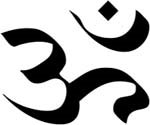
The Five Tibetan Rites and Om.
In the original text written about the Five Tibetan Rites of Rejuvenation, Colonel Bradford does not give instructions to chant the mantra OM. This appears to have been added in later volumes.
Peter Kelder who wrote about the adventures of Colonel Bradford in ‘Ancient Secret of the Fountain of Youth – Book 2” quotes Bradford as saying, “When intoned correctly (Om) has a very powerful stimulating effect on the pineal gland, which is related to the seventh and highest vortex.” He cautions however, that unless a person has already begun to focus on practices to raise higher consciousness, they should not overstimulate the pineal gland. He warns against “overdoing a good thing”, and suggests that it should only be repeated three or four times in succession. He adds that what is important is the sound vibration of the voice, rather than the meaning of the word or the act of chanting.
Om is a mantra – which is traditionally sounded AUM when chanting out loud or said silently within - when focusing your mind or during meditation. A mantra assists your mind to focus when it is scattered. When you chant a mantra, it produces a powerful vibration which can eventually still all other vibrations, although it takes a lot of practice to achieve this. The purpose of a mantra is to produce a state by which you are able to vibrate at the same rate, as the energy and spiritual state produced by and contained within the mantra.
Om is believed to be the first sound heard from the creator - the sound of the universe. It is commonly chanted at the beginning and end of a yoga class, to attune yourself to the universal consciousness. It allows us to experience our connection or reflection as part of the whole. It can be chanted at any other suitable time - at a length to be determined by the individual chanter, which meets his or her level of total comfort – and provided it does not strain the lungs. According to Hindu scriptures, the highest experience in life is to hear the sound of OM in deep silence. The repetition of OM is said to generate the mystical power that can lead your mind into deep meditation and finally into the sate of higher consciousness known as samadhi (bliss).
To chant AUM, you begin with a deep breath. In an effortless single out breath, the sound A originates in the naval, then rises to the throat with the U - opens the fontanelle at the top of the head, and ends with M which rolls over the tongue with the lips closed at the final point. At the beginning of the chant there is an expansion outwards, which ends with a contraction inwards at the conclusion of the M sound. Then repeat again and again as desired.
If you wish to publish this article for your website - you may do so, provided you assign the correct copyright and accreditation exactly as shown below:
Copyright (c) 2006 Carolinda Witt - author T5T - The Five Tibetan Exercise Rites (Penguin) and The 10-Minute Rejuvenation Plan (Random House)
Hello! Number of repetitions of a mantra the OM?
ReplyDeleteAs you will see from the post, you can do it a number of times to suit you. The intention is to align your energies with that of the universal energies. To do this perfectly would take time and a lot of practice.
ReplyDeleteAfter chanting OM a few times, you will probably feel a change in your body/mind. That is is generally sufficient to begin your Five Tibetan practice with a steadier more focused mind. It will assist you in being more present.
Hello! Why words me-me-me it is a mantra the OM?
ReplyDeleteMe-me-me-me is a voice exercise designed to create a specific vibration in your body. According to Colonel Bradford, there is connection between the high pitch voice of an old person, to his loss of virility. Therefore, if you have a deep resounding masculine voice,you are likely to be sufficiently virile. When you practice this exercise it stimulates the base chakra in the sexual area and the 2 chakras in the head. Perhap you are familiar with the Gyuto monks of Tibet who chant very low, for extended periods of time, using specific chants, mantras and sequences? They use their voices to create specific vibrations (energies)in their bodies, which can be used for higher spiritual purposes.
ReplyDeleteThe voices of older women can also become shrill and this exercise could help with increased vitality and improved libido. She must not attempt to lower her voice as low as a man though as this could make her act, think and talk in a 'mannish' way. Ideally she should either raise or lower her voice accordingly to the match the level (vibration) of normal women.
the chant is excellent for meditation as it focuses the mind.
ReplyDeleteThanks for your comment. For the same reason, some people like to say Om before doing the Rites.
ReplyDelete